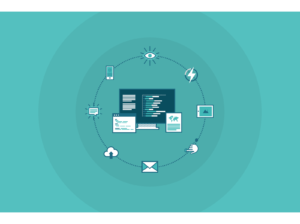
A highlight of the UK conference calendar is always BrightonSEO and I'm fortunate enough to have spoken at the first one at an even bigger venue. Thanks to those of you that came along to my talk. Below is my slide deck and feel free to get in touch if you have any questions at all.
You can find the slides here.
It can be easy to forget the point when we’re building links. Ultimately, links are a means to an end, with the end being something that influences the bottom line of the business such as:
- Revenue
- Leads
- Traffic
While we shouldn’t forget this, we shouldn’t go too far in the other direction either and underestimate the power that links can have on the bottom line of a business. Look at any remotely competitive industry and you’ll see that links can still make the difference between page 2 of search results and the top of page 1.
You still need to get all of the other bits of your website and marketing campaign right in order for links to be as effective as possible though. I’ve seen several examples of great link building campaigns that haven’t had the effect they should have had because of an underlying technical or penalty problem.
This means that links are still as important as ever and will be for a long time to come. This leads to my view that any link building activity we carry out needs to be as sustainable as possible. By sustainable, I mean:
- Makes the best possible use of your time and resources.
- Allows you to reduce the chances of failure on any given campaign.
- Utilizses techniques that aren’t going to cause ranking problems in the future.
At this point, I also want to reference a quote which I think applies to the way we should be approaching link building:
“True strategy is about placing bets and making hard choices. The objective is not to eliminate risk but to increase the odds of success.”
Link building is risky because you can never guarantee that it will work. Unless you buy links but that’s a whole other post! Content driven link building is very risky because you’re creating something that, in your mind, is link worthy and others should like. But you don’t know if this is true until you’ve created it and started to promote it. Yes you can get feedback in advance and you can validate as much as possible, but you still never know 100% if your idea is a good one.
When you can’t guarantee that something will be successful, the best you can do it become at ease with the risk and do your best to reduce it. If, with each content piece you produce, you learn something new and increase the chances that your next piece will be successful, you’ll soon feel much more comfortable with content driven link building.
So that brings us onto the actionable bit. Here I want to talk about a few techniques that we’ve used at Aira to make our content driven link building more sustainable.
1. Avoid one-hit wonders
One way to get links to a piece of content is to make it timely. If you can sync it up with some kind of event which is written about every year, then you have an increased chance of getting your piece featured.
The downside of this approach is that once the event / day in question is over, you may not be able to continue trying to promote your content. The timeliness has gone and your content may no longer be relevant enough to write about.
This creates risk because if you don’t nail the promotion during the timeframe you have, you don’t get a second chance.
To avoid this, I’d suggest keeping the following points in mind:
- Don’t tie your content into the event 100% - don’t even mention the event if you don’t have to.
- Use the event as part of your promotion efforts - it may be a great hook to get coverage but once the event has passed, you simply change your promotion message and not reference the event.
A great tool you can use here is Days of the Year, a site built by Jono Alderson and a great place to get inspiration for content ideas.
To give you an example here, we created a piece of content which looked at the most popular places in the world for couples to get engaged, according to Instagram. We launched it just before National Proposal Day in March, but the content itself didn’t mention National Proposal Day - but our outreach leading up to the day did. Some publishers used this as an angle in their coverage, some didn’t. Either way, we were able to continue promotion after National Proposal Day because we were tied to it and the content idea worked without it.
2. Develop reusable content
The next time you create a piece of content, try to think about whether or not you can reuse elements of the content in the future for other pieces. Here are a few examples of how you could do this:
- Using design elements in Photoshop or Illustrator that can be used again.
- If you develop a piece using HTML, CSS etc, think about how you could use the same code again in the future if needed.
- If you develop something using an API, try to build the code in a way which means you can use it again for other purposes.
The final point is what we have done for the client mentioned above where we pulled data from Instagram. We were able to simply switch out the hashtags we were interested in and then pull a new dataset. It took time but no where near as much time as it would have taken starting all over again.
3.Use ongoing outreach - not one-off
The typical content driven link building process looks something like this:

While there isn’t really anything wrong with this, you don’t necessarily have to be producing brand new content all the time in order to get links. In theory, if you have a good piece of content which isn’t tied to a specific period of time, you can keep promoting it for as long as you want.
If we come back to our thinking that link building needs to be sustainable, this makes even more sense. It does several things for you:
- It makes you think differently about the content you create, therefore making it less likely that you’ll build one-hit wonders.
- It makes good use of your time and resources because you’re spending more time on the promotion of a content piece, as opposed to using that time to create a new piece of content.
- It allows you to do content driven link building for smaller clients who may not have the budget to create new content all the time.
We produced a piece of content for a client which was launched just before Internet of Things Day. After the day had passed, we were outreaching it and getting links for 6 weeks afterwards because it was working well.
If promotion is working, keep going with it.
4. Use different content forms
Another way to make link building sustainable is to use a range of content forms as opposed to the same one over an over again. While doing what works is fine, it is good to balance things up when you can and add a few strings to your bow.
For example, creating long-form, written content can generate links from a range of websites and be perfect for guest blogging.
Yes, guest blogging.
It’s not dead, it still works and Google doesn’t hate it - it’s a normal part of the web and will continue to be. This is a guest blog, do you think Google hates it?
Google do have a problem with certain types of guest blogging and typically don’t like you doing things such as:
- Scaling your outreach so that you end up with links from random, irrelevant sites
- Low quality content, clearly written to a template and to be as cheap as possible
- Shoe-horning in links to money pages where they don’t make sense
If you don’t do these things and focus on the quality instead, then guest blogging is a perfectly sound technique.
For example, we produced a long-form piece of content in collaboration with a client and we can now use this to pitch for quality guest post columns. It’s a very in-depth piece, so we can write about a section for a another website, then link to the full piece so that readers can see the whole thing.
Long-form content can also be built using HTML, CSS and JavaScript which can easily be reused for future long-form content, making it more efficient to produce in the future and again, making it more accessible to clients with smaller budgets.
5. Interactive content doesn't have to be cutting edge
I love cool stuff and love learning about new web technology. There are lots of cool new ways to build content and if you can utilise them, you should. At the same time, it's more about the idea than the technology. You shouldn't start a project by saying that you're going to "build an interactive piece" or you're going to "create a video" - you should start with the idea and let the format flow from there.
To give you an example, we came up with an idea for a client which was to highlight the disparity between males and females on the board and executive teams of the top 10 fortune 500 companies. The core point was to allow someone to see that most of them are very, very male dominated.
We thought about various ways we could do this and agreed that it may not be easy to convey in a static graphic, so we thought about interactive options. Our designer made a suggestion which was very simple - a GIF. This was super simple, didn't require any development time and conveyed the core point of the content perfectly.
6. Translate successful content pieces
This one isn't the easiest to do because it requires native language speakers and people who can then do outreach in those countries. But if you can get this resource, then you can get a head start by repurposing the content that you've already created and translating it.
You need to make sure that the idea itself "translates" and will be communicated effectively in another language and to another culture. This may be quite simple or it may need a bit of extra content to make it work. For example, we translated a piece of content for a client from English into German and our German partners suggested adding an extra piece of data which would help with their outreach. This was a small change but would help make sure that the piece was relevant - we didn't have to create a whole new piece of content from scratch.
That's about it! If you want to talk about any of these ideas or you were at Brighton and want to ask a question, feel free to get in touch or tweet me.






